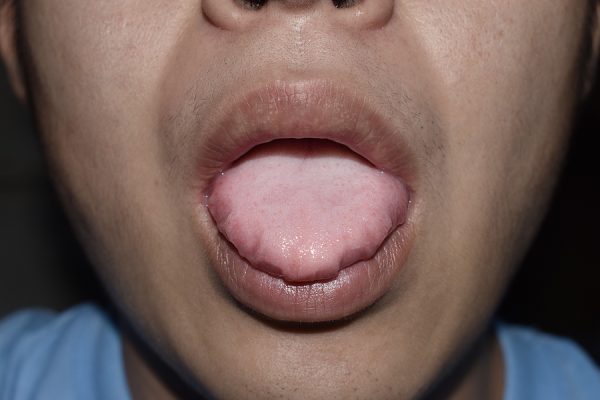Did you know that physicians have been using the tongue to help diagnose patients’ health for thousands of years?
It’s basically an inspection of the shape, size, color, texture and coating of the tongue, and it can help reveal the state of your health. It is a unique feature of Traditional Chinese Medicine, which describes it as “inspecting the exterior to predict the interior.”
While it might sound odd that something as simple as looking at a tongue can help diagnose health conditions, science backs up the validity of using it as a diagnostic tool.
For example, research from the European Society of Cardiology found that the tongues of patients with chronic heart failure look totally different compared to those of healthy people. A typical tongue is pale red with a light white coating. But the tongues of heart failure patients are a deeper red, and the coating is more yellow.
Not only that, but the quantity and types of bacteria of the tongue coating are different between heart failure patients and healthy people.
And here’s another one. It turns out that patients with diabetes are more likely to have a bluish tongue with a thick, furry coating of yellow. So the tongue can actually be a simple, non-invasive tool in the early detection of type 2 diabetes.
While it may sound surprising that the tongue can tell us so much, it makes perfect sense. That’s because, as tongue-coating microbiota enter the digestive tract, they can create a new balance among the micro-organisms in the gut. And as you know, if the microbiota in your gut is out of balance, it can contribute to diabetes, obesity, cardiovascular disease, cancer and other chronic health disorders.
What does a White Tongue Mean?
We know that a white tongue is associated with yeast overgrowth in the body. More specifically, it is a sign of candida overgrowth.
Candida lives in the gut, mouth, throat, vagina and skin. And generally it’s not a problem. But when you experience an overgrowth, it can lead to fatigue, urinary tract and genital infections, digestive issues and painful Candida arthritis.
However, white tongue can also be caused by poor oral hygiene. So make sure you are brushing your teeth and tongue on a regular basis before drawing any conclusions.
Scallops, Swelling, Dots and More
It’s not just the coating on your tongue that can identify health issues.
If your tongue is somewhat scalloped, it probably has more to do with food sensitivities than it does anything else. That’s because food allergies can cause the tongue to swell, which can leave tooth indentations on the outermost sides of the tongue.
However, if it is severely scalloped at the edges, it means your tongue is too big for your mouth. This is classically caused by hypothyroidism that hasn’t been diagnosed yet. People with thyroid problems rarely have healthy tongues.
A blueish tint to the tongue can indicate heart or lung problems. It’s called cyanosis, and may be a sign that your blood isn’t delivering enough oxygen to your body’s organs and tissues.
A bright red tongue, which is sometimes accompanied by red dots, is associated with heart disease. And if your tongue is grossly pale, it could be a sign of anemia.
So you can tell a lot just by looking at your tongue.
If you regularly practice good oral hygiene and see any changes in your tongue’s coating, shape, color or size that last longer than a few days, it can indicate health problems that may require treatment. Only your doctor will be able to determine that.
SOURCES:
Eigenschink M, Dearing L, Dablander TE, Maier J, Sitte HH. A critical examination of the main premises of Traditional Chinese Medicine. Wien Klin Wochenschr. 2020 May;132(9-10):260-273.
Tongue microbes provide window to heart health. European Society of Cardiology. 2020 Jun. Press Release.
Hsu PC, Wu HK, Huang YC, Chang HH, Lee TC, Chen YP, Chiang JY, Lo LC. The tongue features associated with type 2 diabetes mellitus. Medicine (Baltimore). 2019 May;98(19):e15567.
Cater RE 2nd. Chronic intestinal candidiasis as a possible etiological factor in the chronic fatigue syndrome. Med Hypotheses. 1995 Jun;44(6):507-15.
Behzadi P, Behzadi E, Ranjbar R. Urinary tract infections and Candida albicans. Cent European J Urol. 2015;68(1):96-101.
Kumamoto CA. Inflammation and gastrointestinal Candida colonization. Curr Opin Microbiol. 2011 Aug;14(4):386-91.
Gamaletsou MN, Rammaert B, Bueno MA, Sipsas NV, Moriyama B, Kontoyiannis DP, Roilides E, Zeller V, Taj-Aldeen SJ, Miller AO, Petraitiene R, Lortholary O, Walsh TJ. Candida Arthritis: Analysis of 112 Pediatric and Adult Cases. Open Forum Infect Dis. 2015 Dec 23;3(1):ofv207.




